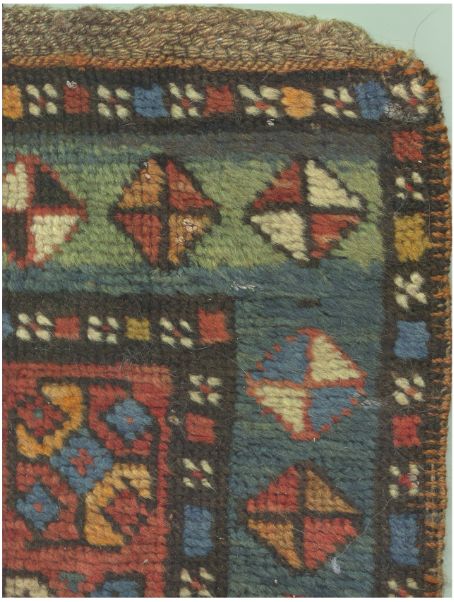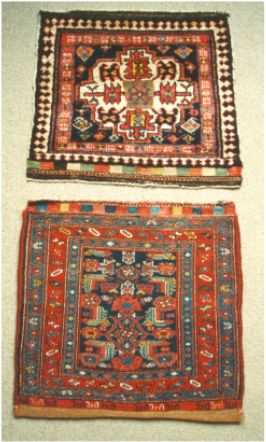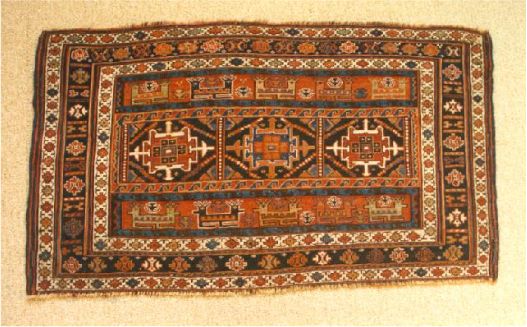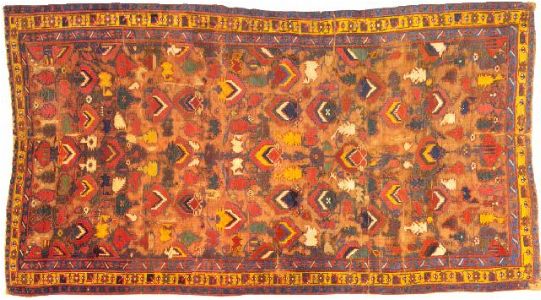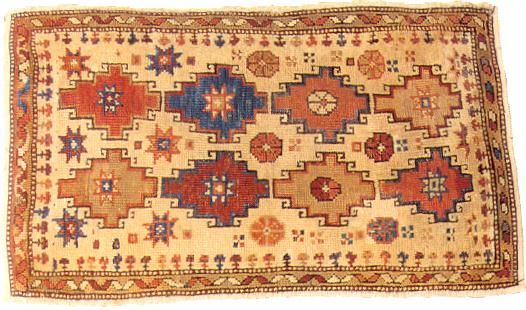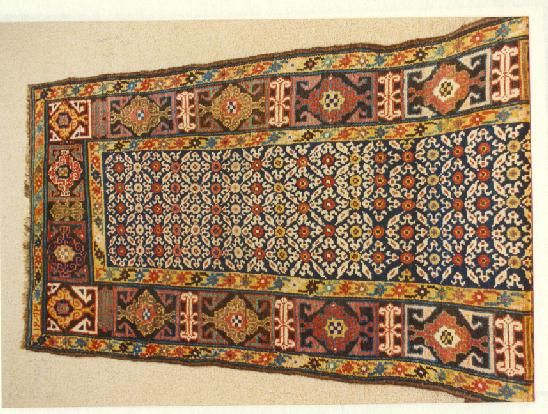Since I raised a possibly tangential point at the beginning, perhaps I should be the one first to take Michael Wendorf's advice to restore the discussion to a footing more closely aligned with Daniel's original intent.
As a possible way of doing this, I have looked a bit for some examples that might be seen to fit into the set of weavings that Daniel is alluding to in this salon. One of the difficulties is that frequently the examples encountered do not include technical descriptions.
But the catalog "Mideast Meets Midwest" done in 1993 in conjunction with ACOR II in Chicago, has a Kurdish section. Although most of the pieces in this section are seen to be from the Bijar area (something that seems, if I understand properly, to put them outside the group of rugs Daniel is pointing to here), the section includes descriptions by Jim Klingner, whom Daniel referred to, and it provides technical descriptions.
Here is the lead piece in that section.
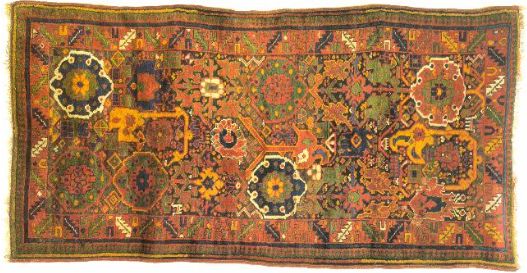
Klinger says that this rug is from the western Persian mountains and is related to the one that is Plate 10 in Eagleton. He says this asymmetric design could be sourced in either the "afshan" or "mina khani" designs.
I would take it that this rug is likely within the group to which Daniel is alluding in this salon.
Here is the technical information:
Age: Late 19th century
Warp length: 100 in. Weft length: 50
in.
Colors: 7
Pile fiber: Wool
Knot: symmetric Vertical: 7
Horizontal: 6
Density: 42 per sq. in.
Warp fiber: tan wool Spin and
ply: 2ZS
Offset: 0 degrees
Weft fiber: red wool Spin and ply:
2ZS
No. of shoots: 2 to 3
Edge finish: 3 cabled warps
End finish:
weft twining at top end
Here also is the second piece in that section:
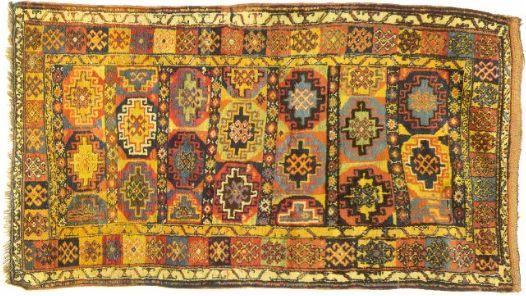
Now it is likely that this second rug is outside the group that Daniel is trying to delineate since Klingner says that it is "possibly from Quchan," which would put it in Khourassan but he also says that it is similar to a rug that Jenny Housego (Plate 140) places in Veramin, which while not in the western mountains, does seem to be within the geographic area to which Daniel is referring.
Here is the technical description of this second piece:
Age: early 20th century
Warp length: 91 in. Weft length: 51
in.
Colors: 13
Pile fiber: wool
Knot: symmetric Vertical: 7
Horizontal: 7
Density: 49 per sq. in.
Warp fiber: tan and white
wool
Spin and ply: Z2S Offset: 0 degrees
Weft fiber: tan and white
wool
Spin and ply: Z spun singles No. of shoots: 2
Edge finish: 3
cabled warps
End finish: weft twining at bottom end, new warps were
added and the length of the rug was extended.
Klingner also offers the following summary of indicators of the weavings of the village and mountain Kurds:
· Most are small or short runners. Short runners, about three feet by
nine
feet, are particularly common in Anatolian Kurdistan.
·
Virtually all rural Kurdish rugs are symmetrically knotted.
· Pile
weavings have short kilim aprons and these are often decorated
with
Twining, extra weft brocading or some other decorative
technicque.
· The selvages are usually reinforced with pile yarns in
different colors.
· Warp ends are frequently cross braided.
· The
longer rugs are often crooked. The is especially common in Anatolian
Kurdish rugs.
This is in 1993 and some things have been learned about distinctive structures since then.
It might be useful to put up other likely examples.
Regards,
R. John Howe
